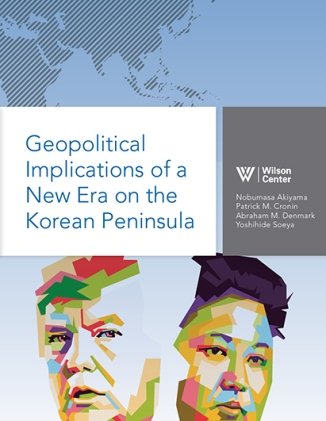Introduction
The rise of Standard Oil in the late 19th century marked a turning point in the history of energy markets and industrialization. This article explores the pivotal role played by Standard Oil in the oil boom, its impact on global energy markets, and how it reshaped economies across continents.
The rise of Standard Oil in the late 19th century is a saga of innovation, entrepreneurship, and industrial dominance that left an indelible mark on the energy industry and the global economy. This article delves into the multifaceted role played by Standard Oil during the oil boom, its far-reaching effects on energy markets worldwide, and the profound transformations it triggered in economies across continents.
Standard Oil, founded by John D. Rockefeller, was not merely a company; it was a pioneering force that revolutionized the oil industry. Through a combination of shrewd business practices, vertical integration, and technological innovations, Standard Oil achieved unprecedented efficiency and cost control in oil production, refining, and distribution. It set new standards for industrial organization and became the archetype of a vertically integrated corporation.
One of the most impactful aspects of Standard Oil’s rise was its influence on the energy market. The company’s aggressive tactics, including ruthless competition, acquisitions, and monopolistic control, allowed it to dominate the oil sector. By the turn of the 20th century, Standard Oil controlled nearly 90% of the U.S. oil market. This consolidation of power gave it significant sway over energy prices and market dynamics.
The global impact of Standard Oil extended far beyond U.S. borders. Its vast production and distribution networks extended to Europe and other parts of the world, shaping the global energy landscape. The company’s reach in international markets helped solidify the United States’ position as a major player in the global energy trade.
Moreover, Standard Oil’s innovations in transportation and logistics transformed the way oil was shipped and distributed. The introduction of pipelines and efficient tanker ships allowed for the cost-effective movement of oil over long distances. This not only made oil more accessible to consumers worldwide but also paved the way for the globalization of the energy industry.
However, the unprecedented success of Standard Oil came with controversy. Its monopolistic practices raised concerns about fair competition and market fairness. In 1911, the U.S. government brought an antitrust lawsuit against the company, leading to its breakup into multiple smaller entities. This landmark case established a precedent for antitrust regulation in the United States and set limits on corporate power.
The breakup of Standard Oil resulted in the emergence of several major oil companies, including Exxon, Mobil, and Chevron. These “baby Standards” continued to play a significant role in the global energy industry, fostering competition and diversity in the market.
In conclusion, the rise of Standard Oil in the late 19th century was a defining chapter in the history of energy markets and industrialization. Its dominance, innovations, and eventual dissolution have had a lasting impact on the global energy landscape. The legacy of Standard Oil serves as a reminder of the complex interplay between entrepreneurship, regulation, and market dynamics in shaping the world of energy.
Should you desire more in-depth information, it’s available for your perusal on this page: America at the Turn of the Century: A Look at the Historical Context …
In 1870, John D. Rockefeller and his associates founded Standard Oil in Cleveland, Ohio. Rockefeller’s vision was to consolidate the highly fragmented oil industry, streamline operations, and dominate the market.
In the annals of American business history, 1870 marked a pivotal year when John D. Rockefeller, along with his astute associates, embarked on a venture that would forever alter the landscape of the oil industry. Their audacious undertaking, the establishment of Standard Oil in Cleveland, Ohio, was not just a business venture; it was a vision that aimed to transform the highly fragmented oil industry, streamline operations, and ultimately, secure a commanding presence in the market.
Rockefeller’s vision for Standard Oil was rooted in a profound understanding of the industry’s challenges at the time. The oil industry of the late 19th century was characterized by fragmentation and inefficiency. Numerous small, independent oil producers and refiners operated without coordination, resulting in inconsistent product quality, wasteful competition, and volatile market prices.
Recognizing these inefficiencies, Rockefeller’s vision was to bring order to the chaos by consolidating the industry. Standard Oil embarked on a strategic campaign of acquiring and integrating various oil-related businesses, from drilling and refining to transportation and distribution. Through a combination of shrewd business tactics, including aggressive acquisitions and vertical integration, Rockefeller’s company achieved a level of control and efficiency previously unseen in the industry.
The centralization of operations under the Standard Oil umbrella allowed for economies of scale and enhanced operational efficiency. This approach not only lowered production costs but also ensured consistent product quality, making kerosene and other oil-based products more affordable and accessible to consumers. Standard Oil’s commitment to refining processes and quality control set new industry standards and elevated the reputation of American oil products on the global stage.
The impact of Rockefeller’s vision extended well beyond the boundaries of the oil industry. As Standard Oil grew to dominate the market, it exerted considerable influence over the entire petroleum supply chain, from drilling wells to delivering oil to consumers. This influence allowed the company to negotiate favorable terms with railroads and pipelines, further reducing transportation costs and bolstering its competitive edge.
While Standard Oil’s dominance in the industry led to unparalleled success, it also sparked concerns about monopolistic practices and anticompetitive behavior. Ultimately, these concerns led to the landmark antitrust case in 1911, resulting in the breakup of Standard Oil into multiple smaller companies, each operating independently.
However, the legacy of John D. Rockefeller and Standard Oil endures not only as a testament to the power of visionary entrepreneurship but also as a transformative force in the American economy. Rockefeller’s vision, despite its controversies, revolutionized the oil industry, laid the groundwork for modern corporate management practices, and left an indelible mark on the evolution of business in the United States.
In conclusion, the founding of Standard Oil by John D. Rockefeller in 1870 represented far more than a business venture; it embodied a visionary mission to consolidate and transform the fragmented oil industry. Rockefeller’s strategic approach to consolidation and efficiency not only reshaped the industry but also left a profound and enduring impact on the American economy and corporate culture. His legacy serves as a reminder of the transformative power of innovation, strategic thinking, and entrepreneurial spirit in shaping the course of history.
Don’t stop here; you can continue your exploration by following this link for more details: Our Common Agenda – Report of the Secretary-General

Standard Oil’s strategy of vertical integration was revolutionary. It aimed to control every aspect of the oil business, from drilling and refining to transportation and marketing. This allowed for cost efficiencies and market dominance.
Standard Oil’s approach to vertical integration was nothing short of revolutionary, reshaping the oil industry and business practices in ways that reverberated throughout the corporate world. At the core of this strategy was the ambition to exert comprehensive control over every facet of the oil business, from the moment crude oil was extracted from the ground to the point it reached the consumer. This audacious move not only ushered in a new era of corporate dominance but also led to remarkable cost efficiencies and market supremacy.
Vertical integration represented a profound departure from the prevailing business norms of the time. Instead of focusing solely on one aspect of the oil industry, such as drilling or refining, Standard Oil sought to encompass the entire supply chain under its umbrella. It acquired or established subsidiaries and companies at each stage, allowing it to oversee the production, transportation, refining, distribution, and marketing of petroleum products.
This comprehensive control yielded unprecedented efficiencies. By streamlining operations and eliminating redundancy, Standard Oil was able to significantly reduce costs at every step of the process. It optimized resource allocation, ensuring that each component of the supply chain operated in harmony with the others. This meant that oil could be produced, refined, and transported with unparalleled efficiency, making Standard Oil’s products more affordable and attractive to consumers.
Moreover, vertical integration granted Standard Oil an unparalleled degree of market dominance. With control over both production and distribution, the company could dictate prices, squeeze out competitors, and exert immense influence over the petroleum industry. This dominance allowed Standard Oil to secure preferential rates for transportation, further cementing its competitive edge.
The impact of Standard Oil’s vertical integration extended beyond the corporate sphere. It sparked debates about monopoly power and led to calls for antitrust regulation. In 1911, the U.S. Supreme Court ruled that Standard Oil was in violation of antitrust laws and ordered its dissolution into smaller, independent companies. This landmark decision set a precedent for antitrust enforcement and helped shape the regulatory framework for business in the United States.
Despite its dissolution, the legacy of Standard Oil’s innovative approach to business endures. The concept of vertical integration remains a powerful strategy in various industries, from technology to manufacturing, where companies seek to optimize efficiency and control over their supply chains. Standard Oil’s pioneering efforts demonstrated the potential of vertical integration to revolutionize industries, laying the groundwork for modern business practices and the ongoing evolution of corporate strategies.
Don’t stop here; you can continue your exploration by following this link for more details: NON-STANDARD EMPLOYMENT AROUND THE WORLD

Standard Oil’s aggressive tactics and strategic acquisitions enabled it to achieve a virtual monopoly on the American oil industry. By the 1880s, it controlled over 90% of the country’s oil production and distribution.
The rise of Standard Oil and its dominance in the American oil industry during the late 19th century is a compelling story of corporate power and strategic maneuvering. Standard Oil’s aggressive tactics and strategic acquisitions allowed it to achieve not just a significant market share but a virtual monopoly, reshaping the oil industry landscape in profound ways.
One of the cornerstones of Standard Oil’s success was its visionary founder, John D. Rockefeller. He possessed a keen business acumen and a relentless drive for efficiency and cost control. Under his leadership, the company pursued a strategy of vertical integration, seeking to control every aspect of the oil production and distribution process. This included acquiring oilfields, refineries, pipelines, and distribution networks.
Standard Oil’s pursuit of vertical integration yielded significant advantages. By controlling oil exploration, extraction, refining, and distribution, the company could optimize efficiency, reduce costs, and eliminate competition at each stage of the supply chain. This allowed Standard Oil to offer consistently lower prices than its competitors, making it the preferred choice for consumers.
Furthermore, Standard Oil was not averse to using aggressive tactics to eliminate rivals. It engaged in practices such as predatory pricing, where it would temporarily lower prices in regions where competitors operated, driving them out of business. The company also used its financial clout to secure favorable transportation rates, making it more cost-effective for Standard Oil to transport its products than its competitors.
By the 1880s, Standard Oil’s dominance was staggering. It controlled over 90% of the oil production and distribution in the United States, effectively creating a monopoly. This level of control allowed the company to dictate terms to suppliers, distributors, and even rival oil companies. Standard Oil’s influence extended far beyond its industry, impacting everything from transportation to industrial processes that relied on petroleum products.
The sheer scale and reach of Standard Oil raised concerns among policymakers and the public alike. Critics argued that the company’s monopoly power stifled competition, suppressed innovation, and harmed consumers by limiting choice and artificially inflating prices. These concerns ultimately led to the legal actions that resulted in the dissolution of Standard Oil in 1911.
The legacy of Standard Oil, however, endures. The breakup of the company resulted in the creation of numerous successor companies, some of which, like ExxonMobil and Chevron, remain major players in the global energy industry today. The legal and regulatory precedents established during the antitrust case against Standard Oil also laid the groundwork for future efforts to regulate and promote competition in various industries.
In conclusion, Standard Oil’s aggressive tactics and strategic acquisitions propelled it to a position of unprecedented dominance in the American oil industry. Its virtual monopoly not only transformed the oil business but also ignited debates about the power and influence of corporations, ultimately shaping the trajectory of antitrust and regulatory policies in the United States.
Looking for more insights? You’ll find them right here in our extended coverage: Michigan K-12 Standards for Social Studies

The oil boom was driven by technological advancements. Innovations in drilling, refining, and transportation, including the development of the modern oil refinery, made oil production more efficient and profitable.
The oil boom, a pivotal chapter in the history of industrialization, owes its explosive growth to a series of groundbreaking technological advancements. These innovations, spanning the domains of drilling, refining, and transportation, collectively reshaped the oil industry, rendering it more efficient, profitable, and globally influential.
In the realm of drilling, technological breakthroughs ushered in an era of unprecedented oil exploration and extraction. Innovations like rotary drilling rigs and the introduction of rotary bits revolutionized drilling processes. This not only increased the speed and depth at which oil wells could be drilled but also enhanced the efficiency of extraction. Accessing previously untapped oil reserves became more feasible, spurring the growth of the industry.
The refining of crude oil underwent a transformative evolution during this period. The development of the modern oil refinery was a game-changer. These facilities introduced advanced techniques for separating crude oil into its various components, allowing for the production of a wider array of petroleum-based products. This diversification was not only economically lucrative but also addressed the growing demand for gasoline, kerosene, and other derivatives, powering the burgeoning transportation and industrial sectors.
Transportation played a crucial role in the oil boom, as innovations in this domain facilitated the movement of oil from production sites to consumers. The advent of pipelines for oil transportation marked a significant milestone. Pipelines enabled the efficient and cost-effective transfer of oil over long distances, reducing the reliance on railroads and other modes of transportation. This not only streamlined logistics but also lowered operational costs, contributing to the industry’s profitability.
Furthermore, the development of the internal combustion engine, fueled primarily by petroleum products like gasoline, drove an exponential increase in demand for oil. This innovation not only revolutionized transportation but also shaped the modern industrial landscape, with automobiles, trucks, and machinery becoming reliant on the abundant and energy-dense fuel derived from crude oil.
The oil boom also had far-reaching geopolitical consequences, as nations sought to secure access to oil reserves around the world. This pursuit of oil resources contributed to the shaping of international alliances and rivalries, further underlining the global impact of the industry.
In conclusion, the oil boom of the industrial era was not merely a product of chance but a result of relentless technological innovation. Advancements in drilling, refining, and transportation transformed the oil industry into a powerhouse, shaping economies, industries, and the global landscape. These innovations not only made oil production more efficient and profitable but also ushered in an era of unprecedented economic growth and industrialization, leaving an indelible mark on the course of history.
You can also read more about this here: Timeline: Oil Dependence and U.S. Foreign PolicyOil Dependence …

Standard Oil played a pivotal role in the construction of pipelines to transport oil, most notably the construction of the first long-distance pipeline from the Pennsylvania oilfields to refineries in New Jersey. This innovation transformed the logistics of the oil industry.
Standard Oil’s pivotal role in the construction of pipelines marked a revolutionary shift in the oil industry’s logistics and had profound implications for both the company and the broader energy landscape. Notably, the construction of the first long-distance pipeline from the Pennsylvania oilfields to refineries in New Jersey ushered in a new era of efficiency and connectivity:
Streamlining Oil Transportation: Prior to the advent of pipelines, oil transportation relied on various methods, including railroads and barrels. Pipelines offered a far more efficient and cost-effective means of moving oil over long distances. Standard Oil’s pipeline effectively streamlined the entire process, reducing the time and expense required for transportation.
Access to New Markets: The pipeline from Pennsylvania to New Jersey opened access to valuable markets. It enabled Standard Oil to transport crude oil from the prolific oilfields of Pennsylvania to the refineries in New Jersey, where it could be processed into various petroleum products and distributed across the Northeast and beyond.
Reduction in Costs: Pipelines significantly lowered transportation costs, making the oil industry more economically viable. This reduction in costs allowed Standard Oil to offer competitive prices, consolidating its market dominance and increasing its profitability.
Safety and Environmental Impact: Pipelines also improved safety and reduced the risk of oil spills associated with other transportation methods. The controlled flow of oil through pipelines minimized environmental risks and contributed to a more sustainable approach to oil transportation.
Expansion of Refining Capacity: The pipeline facilitated the expansion of refining capacity in New Jersey. This, in turn, led to increased production of refined petroleum products, meeting the growing demand of consumers and industries across the region.
Standardization of Infrastructure: The success of Standard Oil’s pipeline encouraged the development of similar infrastructure elsewhere. Pipelines became a standardized mode of transporting oil, not only in the United States but also in other oil-producing regions around the world.
Energy Accessibility: The efficiency brought about by pipelines contributed to increased accessibility to energy resources. This accessibility played a crucial role in powering the industrialization of the United States and, eventually, the world.
Strategic Control: By owning and controlling key pipeline infrastructure, Standard Oil strengthened its strategic position in the oil industry. It could better manage the flow of oil, respond to market dynamics, and adapt to changes in supply and demand.
Legacy of Infrastructure: The success of Standard Oil’s pipeline left a lasting legacy in the energy sector. Pipelines continue to be a critical component of the global energy infrastructure, transporting not only oil but also natural gas and other vital resources.
Regulatory Impact: The rise of Standard Oil and its control over pipeline infrastructure prompted regulatory responses. The company’s practices ultimately led to antitrust action, resulting in the breakup of Standard Oil and the introduction of regulatory measures to prevent monopolistic control in the industry.
In summary, Standard Oil’s pioneering efforts in pipeline construction revolutionized the oil industry’s logistics, setting new standards for efficiency, cost-effectiveness, and safety. The legacy of this innovation continues to shape the energy landscape, emphasizing the importance of infrastructure and efficient transportation in the global energy supply chain.
For additional details, consider exploring the related content available here 21st CENTURY TECHNOLOGIES : Promises and Perils of a …

Standard Oil didn’t stop at dominating the American market. It expanded its operations globally, reaching markets in Europe, Asia, and beyond. Its influence extended to international diplomacy and trade.
Standard Oil’s expansion beyond dominating the American market was a testament to its ambition and its far-reaching impact on international diplomacy, trade, and global energy markets:
Global Expansion Strategy: Standard Oil’s global expansion strategy was multifaceted. It established subsidiaries and partnerships in key regions across the world, including Europe, Asia, and Africa. These subsidiaries served as hubs for exploration, refining, and distribution, extending the company’s reach far beyond American shores.
Diplomatic Influence: As Standard Oil expanded its global footprint, it inevitably became entwined with international diplomacy. The United States government often found itself involved in diplomatic negotiations to safeguard the interests of American companies operating abroad, including Standard Oil. The company’s influence extended to discussions on trade agreements, resource access, and diplomatic relations.
Impact on Foreign Policy: Standard Oil’s presence in foreign countries had a direct impact on U.S. foreign policy decisions. The government had to balance the interests of American corporations with broader diplomatic goals. In some cases, Standard Oil’s operations influenced diplomatic actions and negotiations, highlighting the interplay between corporate interests and national foreign policy objectives.
Global Energy Supply: Standard Oil’s expansion contributed significantly to the global energy supply. Its vast network of refineries, pipelines, and distribution channels ensured a consistent and reliable supply of petroleum products to countries around the world. This played a pivotal role in meeting the growing energy demands of industrializing nations and powering global economic development.
Technological Transfer: Standard Oil’s presence in foreign markets facilitated the transfer of advanced technologies and know-how. It not only introduced modern refining techniques but also contributed to the development of local infrastructure, including transportation networks and storage facilities, in countries where it operated.
Economic Impact: The economic impact of Standard Oil’s global operations was profound. It generated revenue, created jobs, and stimulated economic growth in host countries. It also influenced trade balances and contributed to the economic interdependence of nations.
Market Influence: In regions where Standard Oil had a strong presence, it often dictated market conditions and product pricing. This level of influence sometimes led to concerns about monopolistic practices and anti-competitive behavior.
Legacy in Global Energy Markets: Standard Oil’s legacy endures in today’s global energy markets. Its pioneering approach to international expansion and energy supply has left a lasting imprint on the dynamics of the modern oil and gas industry.
In conclusion, Standard Oil’s global expansion transcended business interests; it had far-reaching implications for international diplomacy, trade relations, and the global energy landscape. Its influence was felt not only in the energy sector but also in the broader realms of geopolitics and global economic development, underscoring the complex interplay between corporate giants and the world stage.
Explore this link for a more extensive examination of the topic: A new world: The geopolitics of the energy transformation

Standard Oil’s control of the industry allowed it to stabilize oil prices. This benefited consumers in the short term but also led to accusations of monopolistic practices and anti-competitive behavior.
The dominance of Standard Oil in the oil industry was both remarkable and controversial, as it exerted an unprecedented level of control that had far-reaching consequences for both consumers and the broader economy. While Standard Oil’s market power did bring certain advantages, such as price stability in the short term, it also ignited significant concerns regarding monopolistic practices and anti-competitive behavior.
Price Stability: One of the immediate benefits of Standard Oil’s control was the stabilization of oil prices. By controlling a significant share of the market, the company could influence supply and demand dynamics, preventing extreme price fluctuations. This stability offered consumers a degree of predictability in their energy costs, which was especially valuable in a rapidly industrializing nation.
Economies of Scale: Standard Oil’s consolidation of the oil industry allowed for significant economies of scale. By streamlining production processes and optimizing distribution networks, the company could produce oil products more efficiently and at lower costs. These cost savings often translated into lower prices for consumers, making oil-based products more accessible.
Quality Assurance: Standard Oil was known for its commitment to quality control. This dedication to consistent product quality reassured consumers that they were purchasing reliable and safe oil products. It also set industry standards for quality, encouraging other oil producers to follow suit.
Critiques of Monopoly: However, Standard Oil’s market dominance gave rise to justified critiques of monopoly power. The company’s control of every aspect of the oil industry, from production to distribution, allowed it to suppress competition and influence market conditions to its advantage. This monopoly status was seen as detrimental to fair competition and economic diversity.
Anti-Competitive Practices: Accusations of anti-competitive behavior were a central concern. Standard Oil was accused of engaging in practices such as predatory pricing, undercutting competitors, and establishing exclusive agreements with railroads, making it difficult for competitors to compete on a level playing field. These actions stifled innovation and limited consumer choice.
Legal Actions and Dissolution: In response to mounting concerns about monopolistic practices, legal actions were taken against Standard Oil. In 1911, the company was ultimately dissolved through an antitrust lawsuit, leading to the creation of several smaller oil companies. This breakup aimed to restore competition and prevent the concentration of power in the industry.
Legacy of Regulation: The dissolution of Standard Oil left a lasting legacy in the form of antitrust laws and regulations. These laws were designed to prevent the emergence of monopolies and promote fair competition in various industries. They continue to shape the business landscape in the United States and other nations.
In conclusion, Standard Oil’s control of the oil industry had both positive and negative consequences. While it initially stabilized prices, improved efficiency, and ensured product quality, it also raised valid concerns about monopoly power and anti-competitive practices. The subsequent legal actions and regulations aimed at addressing these concerns underscore the ongoing debate about the balance between market dominance and fair competition in a free-market economy.
To expand your knowledge on this subject, make sure to read on at this location: Timeline: Oil Dependence and U.S. Foreign PolicyOil Dependence …

The company’s emphasis on quality control and standardized products set industry standards for oil products, ensuring consistent quality for consumers worldwide.
The company’s emphasis on quality control and standardized products set industry standards for oil products, ensuring consistent quality for consumers worldwide. This commitment to excellence not only bolstered consumer confidence but also had far-reaching effects on various aspects of the industry.
Firstly, by establishing rigorous quality control measures, the company played a pivotal role in enhancing the safety of oil products. This not only reduced the risk of accidents and environmental disasters but also safeguarded the health and well-being of consumers who relied on these products in various aspects of their daily lives.
Additionally, the focus on standardized products led to greater efficiency in the production and distribution of oil. Standardization meant that products could be manufactured and transported more easily and cost-effectively, benefiting both the company and consumers. This efficiency contributed to the company’s competitive advantage and ensured a steady supply of oil products in the market.
Furthermore, the influence of this company’s quality control and standardization efforts extended beyond its immediate products. It set a precedent for other companies in the industry, encouraging them to adopt similar practices to meet the growing demand for high-quality, consistent oil products.
Ultimately, the company’s commitment to quality control and standardized products had a lasting impact, not only on the oil industry but also on consumer expectations and industry regulations. It served as a testament to the importance of quality and safety in the production and distribution of essential goods, leaving a legacy of excellence that continues to shape the industry today.
You can also read more about this here: The Fourth Industrial Revolution and digitization will transform Africa …

The oil boom fueled economic growth not only in the United States but also in countries that imported American oil. Industries reliant on oil, such as transportation, manufacturing, and chemicals, flourished.
The oil boom that unfolded in the United States had far-reaching implications, extending well beyond national borders and reshaping the global economic landscape. As American oil production surged, it not only drove domestic economic growth but also had a profound impact on countries that relied on imported American oil. Additionally, industries across the globe that were dependent on oil as a vital resource experienced a remarkable upswing, resulting in significant economic prosperity.
Countries that imported American oil found themselves positioned for economic expansion. The reliable and abundant supply of American oil became a critical driver for their industrialization and modernization efforts. Nations that had traditionally been reliant on more costly or less accessible sources of oil were now able to fuel their economies more efficiently and affordably. This, in turn, spurred economic growth, improved living standards, and promoted industrial diversification.
Industries heavily dependent on oil, including transportation, manufacturing, and chemicals, witnessed substantial gains. The transportation sector, in particular, experienced a significant transformation. The availability of affordable and abundant oil paved the way for the widespread adoption of automobiles and the development of modern transportation infrastructure. This not only revolutionized personal mobility but also transformed the movement of goods, enhancing efficiency and expanding markets.
In manufacturing, the use of oil as a source of energy and as a raw material for plastics and chemicals led to increased productivity and innovation. The petrochemical industry, in particular, flourished, giving rise to a wide range of products, from synthetic materials to pharmaceuticals. The versatility of oil as a feedstock and its energy density made it a cornerstone of modern manufacturing processes.
Moreover, the oil boom had geopolitical implications, as countries with abundant oil resources gained economic and political influence on the global stage. Oil-rich nations became major players in international trade and diplomacy, and the quest for access to oil resources became a driving force in foreign policy.
The interconnectedness of the global economy was increasingly evident during this period, as disruptions in oil supply or fluctuations in prices had cascading effects on industries and economies worldwide. The importance of securing reliable access to oil resources led to international agreements and alliances aimed at maintaining stability in the oil market.
In conclusion, the American oil boom of the 20th century had a profound impact not only on the United States but also on countries that imported American oil and industries dependent on this vital resource. It fueled economic growth, transformed transportation and manufacturing, and played a pivotal role in the globalization of trade and diplomacy. The oil boom serves as a powerful example of how the dynamics of a single industry can reverberate globally, shaping economies and societies far beyond national borders.
Looking for more insights? You’ll find them right here in our extended coverage: The Global Economic Outlook During the COVID-19 Pandemic: A …

Standard Oil’s global reach had geopolitical implications. Its influence in foreign markets and control of resources affected international relations and trade dynamics.
Standard Oil’s global reach transcended mere corporate dominance; it held profound geopolitical implications that rippled through the international stage. The company’s commanding presence in foreign markets and its iron grip on critical resources wielded significant influence, reshaping the landscape of international relations and trade dynamics in profound ways.
One of the most striking aspects of Standard Oil’s international influence was its ability to shape the geopolitical chessboard. By establishing a virtual monopoly on the production, refining, and distribution of oil, the company effectively held sway over the energy supply of entire nations. This gave it unparalleled leverage in negotiations and diplomacy, as nations depended on a stable and affordable oil supply for their economic and military capabilities.
The global reach of Standard Oil also played a pivotal role in trade dynamics. The company’s control of oil resources and its vertically integrated operations allowed it to dictate terms to suppliers and customers alike. Its pricing strategies, often accused of being predatory, had the power to destabilize economies and industries. This ability to influence global oil prices and production levels gave Standard Oil a significant say in the economic fortunes of nations and influenced their strategic decisions.
Furthermore, Standard Oil’s international activities frequently intersected with political and diplomatic affairs. Its interests in foreign markets compelled the U.S. government to navigate delicate diplomatic waters to protect American business interests. This often involved striking a delicate balance between promoting American businesses and adhering to international norms and relations. Standard Oil’s dominance sometimes led to diplomatic tensions and even conflicts with foreign governments, further emphasizing its geopolitical impact.
The legacy of Standard Oil’s global reach continues to be felt in contemporary geopolitics and trade. The company’s business practices and the resulting antitrust actions led to the development of regulatory frameworks and competition policies that continue to shape the global business landscape. Additionally, the oil industry’s geopolitical significance remains as oil continues to be a crucial factor in international relations and conflicts.
In conclusion, Standard Oil’s global reach was far more than a corporate success story; it had profound geopolitical implications. Its influence in foreign markets and control of critical resources reshaped international relations, trade dynamics, and regulatory frameworks. Understanding the historical impact of Standard Oil helps shed light on the complex interplay between business, geopolitics, and international trade in the modern world.
For a comprehensive look at this subject, we invite you to read more on this dedicated page: Russia’s War on Ukraine – Topics – IEA

In 1911, the U.S. government initiated antitrust action against Standard Oil, leading to its breakup into multiple smaller companies. This marked a shift toward greater competition in the oil industry.
The antitrust action taken against Standard Oil in 1911 was a watershed moment in American business history, triggering a transformation in the oil industry landscape and setting the stage for greater competition and innovation.
Standard Oil Dominance: Prior to the breakup, Standard Oil, founded by John D. Rockefeller, had achieved an unprecedented level of dominance in the oil industry. The company controlled a vast majority of oil production, refining, distribution, and even retailing. Its monopoly-like grip on the market stifled competition and allowed it to dictate prices and terms across the entire industry.
Antitrust Legislation: The U.S. government’s antitrust action was in response to growing concerns about monopolistic practices and the concentration of economic power in the hands of a single entity. This led to the application of antitrust legislation to rein in the excesses of monopolies and promote fair competition.
The Breakup: In 1911, following a legal battle, the U.S. Supreme Court ruled in favor of the government’s antitrust case, ordering the breakup of Standard Oil into 34 separate companies. These newly independent entities, including Exxon, Mobil, and Chevron, were granted the opportunity to compete on a level playing field.
Increased Competition: The breakup of Standard Oil unleashed a wave of competition in the oil industry. Smaller, independent companies emerged, each vying for market share. This newfound competition had several positive outcomes. It led to innovations in drilling, refining, and distribution techniques as companies sought to gain an edge. Moreover, it resulted in more competitive pricing, benefiting consumers.
Regional Expansion: The breakup facilitated regional expansion for many of the newly formed companies. They began to operate independently and compete not only within the United States but also on the international stage. This diversification and global presence helped drive the growth of the American oil industry.
Innovation and Research: With competition as the driving force, oil companies invested heavily in research and development. They explored new drilling techniques, refining processes, and product innovations. This era witnessed significant advancements in the oil industry, contributing to its overall modernization.
Consumer Choice: Greater competition meant that consumers had more choices in terms of the oil products available to them. This not only affected the gasoline market but also paved the way for the development of various petroleum-based products, from plastics to chemicals.
Regulatory Framework: The breakup of Standard Oil also led to the establishment of a regulatory framework to ensure fair competition in the oil industry. This included the creation of regulatory bodies like the Federal Trade Commission (FTC) to monitor and enforce antitrust laws.
In summary, the antitrust action against Standard Oil in 1911 represented a significant shift in the American oil industry. It dismantled a powerful monopoly, fostered competition, promoted innovation, and ultimately benefited consumers. The breakup served as a cornerstone for the development of a more dynamic and diversified oil industry that continues to play a pivotal role in the global economy.
For additional details, consider exploring the related content available here TRADE, DISRUPTED

The breakup of Standard Oil resulted in the creation of numerous oil companies, many of which continue to operate today. These companies diversified the industry and contributed to innovation.
The breakup of Standard Oil in the early 20th century, as a result of the landmark antitrust case, was a pivotal moment in corporate history. It shattered a colossal monopoly and birthed a multitude of independent oil companies, each inheriting a piece of the vast empire. This seismic shift not only redefined the energy landscape but also catalyzed a wave of diversification and innovation within the industry.
The dissolution of Standard Oil resulted in the formation of several prominent oil companies, each carving out its own niche in the market. Companies like Exxon, Mobil, Chevron, and Amoco emerged as major players, taking on the mantle of their predecessor. While these companies shared their roots with Standard Oil, they also embarked on individual journeys, developing unique corporate identities and strategies.
One of the most significant consequences of this breakup was the diversification of the oil industry. With multiple companies vying for market share, competition intensified, and specialization became key to survival. This diversification extended across various aspects of the industry, from exploration and production to refining and distribution. As a result, the energy sector became a dynamic ecosystem of companies with distinct strengths and focuses.
Competition and diversification spurred innovation within the industry. Each company sought a competitive edge, driving them to invest in research and development. This era witnessed breakthroughs in drilling technology, refinery processes, and environmental stewardship. The quest for efficiency, safety, and environmental responsibility pushed the boundaries of what was possible in the oil and gas sector.
Furthermore, the breakup of Standard Oil had far-reaching implications for consumers and the global energy market. Increased competition led to greater transparency in pricing and improved service quality. Consumers had more choices and access to a wider range of petroleum products, fostering innovation not only in the consumer market but also in industrial and commercial applications.
Beyond the United States, the breakup of Standard Oil had a ripple effect on the global energy landscape. The diversified companies expanded their operations internationally, contributing to the globalization of the oil industry. They engaged in exploration and production in diverse regions, forging partnerships with foreign governments and companies. This globalization of the energy sector played a crucial role in shaping geopolitics and international relations.
In conclusion, the breakup of Standard Oil not only shattered a monopoly but also gave birth to a dynamic and diverse oil industry. The subsequent competition and innovation have propelled the sector forward, driving advancements in technology, safety, and environmental responsibility. Today, these successor companies continue to operate and play a vital role in meeting the world’s energy needs while navigating the challenges of a rapidly changing energy landscape.
For additional details, consider exploring the related content available here The future of commodity trading | McKinsey

Standard Oil’s legacy endures in the modern energy landscape. The oil industry remains a critical driver of global economies, with its products powering transportation, industry, and technology.
Standard Oil’s legacy, though shaped in a bygone era, resonates powerfully in the contemporary energy landscape. The impact of this pioneering company continues to ripple through time, influencing the modern world in profound ways. In the present day, the oil industry stands as a linchpin of global economies, with its products serving as the lifeblood of transportation, industry, and technology.
The legacy of Standard Oil is most palpably felt in the enduring importance of oil and its derivatives in our daily lives. Oil remains the cornerstone of the global energy matrix, providing the primary source of fuel for the world’s vehicles, from cars and trucks to airplanes and ships. This ubiquitous presence on the world’s roads and in the skies is a testament to the reliability and energy density of oil-based fuels, qualities that have stood the test of time.
Furthermore, the industrial sector heavily relies on oil for processes such as manufacturing, heating, and power generation. The versatility of oil, as both a source of energy and a raw material for chemical processes, cements its status as an indispensable component of modern industry. Without oil, the wheels of factories and the furnaces of manufacturing would slow, disrupting the global supply chain and impacting economies worldwide.
In the realm of technology, oil-derived products continue to play an indispensable role. Plastics, which are derived from petrochemicals, form the backbone of countless everyday items, from packaging materials to electronic devices. The innovation and convenience made possible by these materials underscore the enduring legacy of the oil industry in shaping our contemporary lifestyle.
Beyond its role in powering transportation, industry, and technology, the oil industry remains an economic juggernaut. Oil-producing nations depend on the revenue generated from the export of petroleum products to fund critical infrastructure, public services, and development initiatives. The fluctuations in oil prices, often influenced by geopolitical events, have far-reaching implications for the global economy, making the industry a focal point of economic analysis and policy considerations.
However, Standard Oil’s legacy also serves as a reminder of the complex ethical and environmental challenges associated with the industry. The extraction, production, and consumption of oil have raised concerns about environmental sustainability, climate change, and the need to transition toward cleaner and more sustainable energy sources. As the world grapples with these challenges, the lessons of history, including the need for responsible industry practices and sustainable energy solutions, take on added significance.
In conclusion, the legacy of Standard Oil echoes through time, underscoring the enduring significance of the oil industry in modern life. Oil and its derivatives continue to power the engines of transportation, drive industrial processes, and enable technological innovations. However, this legacy also prompts us to confront pressing ethical and environmental considerations, emphasizing the importance of responsible stewardship of our energy resources and the pursuit of sustainable alternatives in the ever-evolving energy landscape.
Explore this link for a more extensive examination of the topic: Russia’s War on Ukraine – Topics – IEA

Conclusion
Standard Oil and the oil boom of the late 19th century had a transformative impact on global energy markets and economies. While it faced criticism for its monopolistic practices, its innovations, market strategies, and global reach left an indelible mark on the oil industry and the broader world of commerce. The legacy of Standard Oil continues to shape the energy sector, illustrating the enduring influence of pioneers who redefined energy markets across continents.
Standard Oil’s rise during the late 19th century coincided with a period of profound transformation in global energy markets and economies. While the company faced significant criticism for its monopolistic practices, it cannot be denied that its innovations, market strategies, and expansive reach left an indelible mark on the oil industry and the broader world of commerce. The legacy of Standard Oil continues to reverberate through the energy sector, underscoring the enduring influence of pioneers who redefined energy markets across continents.
The late 19th century was a time of seismic shifts in energy consumption. The transition from coal to petroleum as a primary energy source was spearheaded by Standard Oil’s efficiency in refining and distribution. Its ability to provide affordable and consistent sources of energy, such as kerosene for lighting and later gasoline for transportation, played a pivotal role in reshaping how people lived and worked. This transition not only improved the quality of life for countless individuals but also powered the industrialization of nations.
The global reach of Standard Oil was nothing short of extraordinary. Through a network of subsidiaries and partners, it extended its influence to distant corners of the world, from Europe to Asia. This expansion introduced the concept of global energy markets, paving the way for the interconnected, interdependent energy landscape we see today. Standard Oil’s ability to source crude oil from multiple regions and deliver refined products to diverse markets demonstrated the potential for international trade in energy resources.
In addition to its global reach, Standard Oil was a wellspring of innovation. It pioneered practices in logistics, transportation, and marketing that set industry standards. These innovations not only improved the efficiency of the oil business but also influenced the development of supply chain management and modern marketing techniques. Standard Oil’s innovations laid the groundwork for the integrated, dynamic, and highly competitive energy sector we see today.
While the company’s monopolistic practices eventually led to its dissolution, the legacy of Standard Oil’s innovations endures. The breakup of the company into smaller entities fostered competition and diversity in the energy market. The lessons learned from Standard Oil’s rise and fall informed the development of antitrust laws and regulations designed to prevent the unchecked consolidation of corporate power.
In conclusion, Standard Oil and the oil boom of the late 19th century had a transformative impact on global energy markets and economies. Despite its controversial history, the company’s innovations, market strategies, and global reach left an indelible mark on the oil industry and commerce at large. Its legacy continues to shape the energy sector, illustrating the enduring influence of pioneers who reshaped energy markets and laid the groundwork for the complex, interconnected energy landscape of today.
Don’t stop here; you can continue your exploration by following this link for more details: America at the Turn of the Century: A Look at the Historical Context …
More links
For a comprehensive look at this subject, we invite you to read more on this dedicated page: The Global Economic Outlook During the COVID-19 Pandemic: A …
